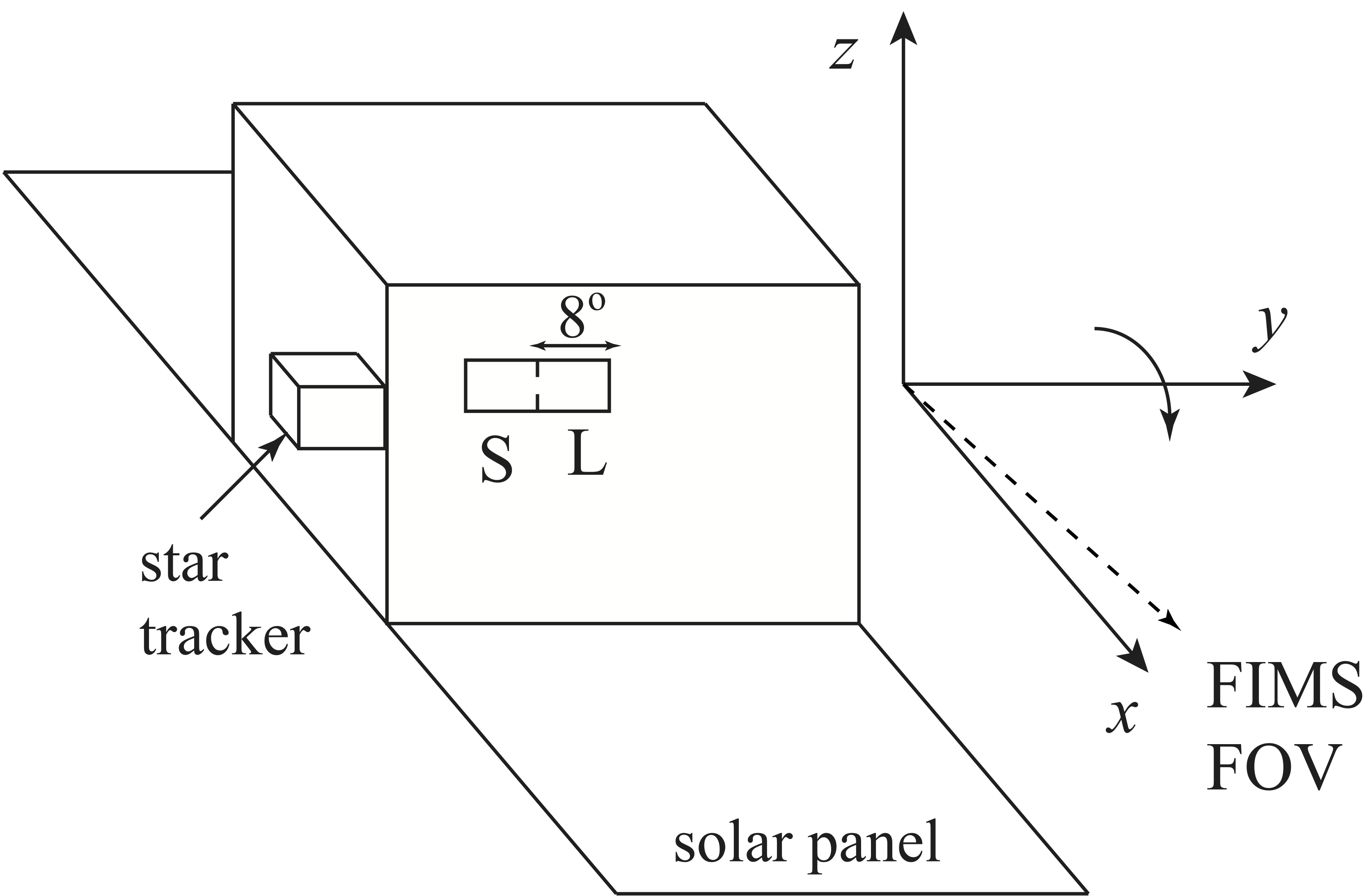This article describes how the teams dealt with a time delay in the attitude reporting system. The FIMS team compensated by developing an attitude correction procedure that used the FIMS-SPEAR data like a star tracker, while the SPEAR team compensated by removing the affected data.
On this page...
The Problem
FIMS-SPEAR obtained survey data from ∼1500 orbits during its mission lifetime, covering ∼86% of the sky. However, the original attitude data provided inaccurate coordinate information due to issues with the attitude control system.
The attitude reconstruction from multiple overlapping observations revealed the existence of time delays in the attitude reporting system. Attitude information recorded at a time T was, in fact, measured at T −∆T. The time delay ∆T was found to be between about 2 to 4 seconds in most orbits (within a full range of about 0 to 6 seconds). Given that the time synchronization uncertainty between FIMS and the on-board computer was less than 0.4 seconds, this time delay in reporting the attitude information was a critical problem. The issue may have emerged from the attitude information system, which reported the time after the spacecraft’s attitude was calculated, not the time the star tracker measured the star; the communication lag between the payload and the WIST task, which calculates the spacecraft attitude, might have caused the time delay (Kwak & Park 2004, in Korean). Moreover, the time delay was found to vary continuously, even within each individual orbit.
FIMS Procedure
The FIMS team utilized the FIMS-SPEAR data as if it were a star tracker to overcome the time delay issue. The FIMS-SPEAR image obtained from each orbit observation was compared with the stellar image constructed from the TD-1 Stellar Catalog. The TD-1 Stellar Catalog provided the stellar fluxes measured in a similar wavelength range to that of FIMS-SPEAR, making it appropriate for attitude reconstruction of the FIMS-SPEAR data. The TD-1 stars were convolved with a two-dimensional Gaussian function with the spatial dispersion of the FIMS-SPEAR point spread function. For instance, the point sources were convolved with a 2D Gaussian with the FWHM of 5 arcmin for the scan direction, perpendicular to the slit’s long direction and 10 arcmin in the slit’s long direction. A wider FWHM along the slit’s long direction was adopted to take account of the instrumental scattering effect (see Jo et al. 2016).
The team attempted to find a method to match the two images by adopting a smoothly varying function for the time delay ∆T. However, the time delay was found to vary significantly and unpredictably depending on the orbit. Therefore, the team eventually manually matched the locations of individual point stars with those of the TD-1 stars by visual inspection of every datum obtained from respective orbits. Then, the coordinates of every photon were obtained by interpolating the coordinates of the TD-1 stars. The matching between the FIMS-SPEAR point sources and those of the TD-1 was performed by fitting small images of FIMS-SPEAR obtained around individual bright point sources with a Gaussian function and assigning the best-fit coordinates to those of the TD-1 stars. The process was performed in the ecliptic (λ, β) or equatorial (RA, DEC) coordinate system, depending on whether the observation was performed by scanning the sky along the meridian of the ecliptic or equatorial coordinates. In this way, the team could reconstruct the attitude very well, mostly focusing on the attitude errors caused along the scanning direction. This was possible because the wobble about the FOV axis (x-axis in the figure below) was reasonably stable during the scanning observation.
Schematic diagram of the FIMS FOV and the coordinate system of STSAT-1 and FIMS/SPEAR.
SPEAR Procedure
The SPEAR team excluded data suffering from the attitude time-delay problem. For multiple complex reasons that remain under investigation (see "sky coverage" in FIMS vs. SPEAR Features), the SPEAR products have a total all-sky exposure time about 20% less than that of their FIMS equivalents. The ratio is not one-sided, and there are regions in which the SPEAR pipeline netted substantially more exposure time than the FIMS pipeline. That said, one of the likely reasons for the SPEAR products' lower total exposure time is that the FIMS pipeline recovered data with time-delayed attitudes that the SPEAR pipeline discarded.
